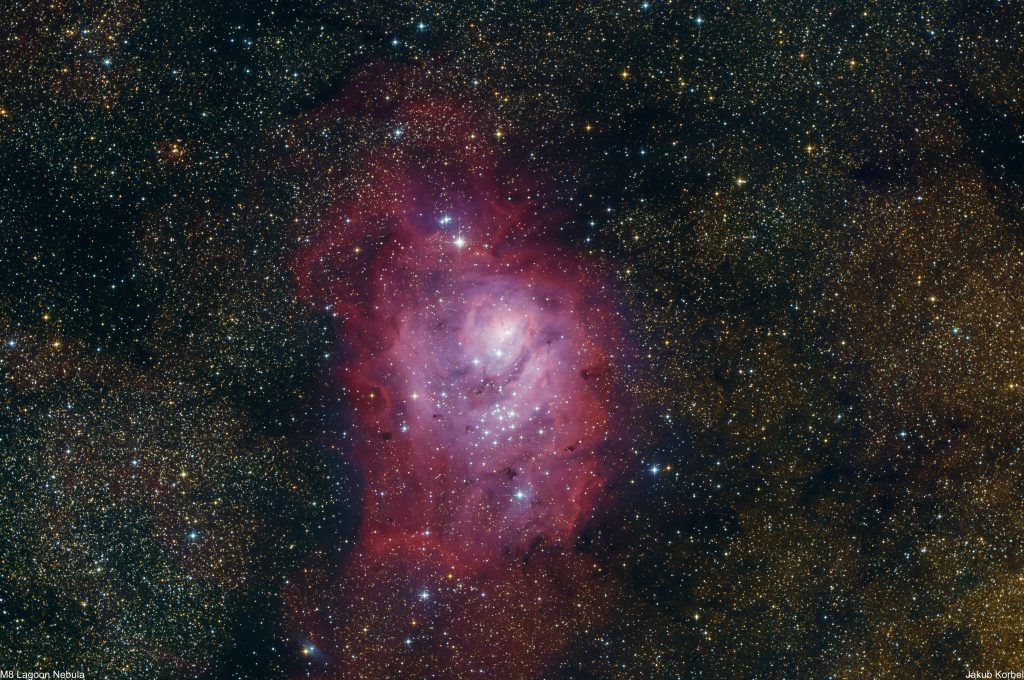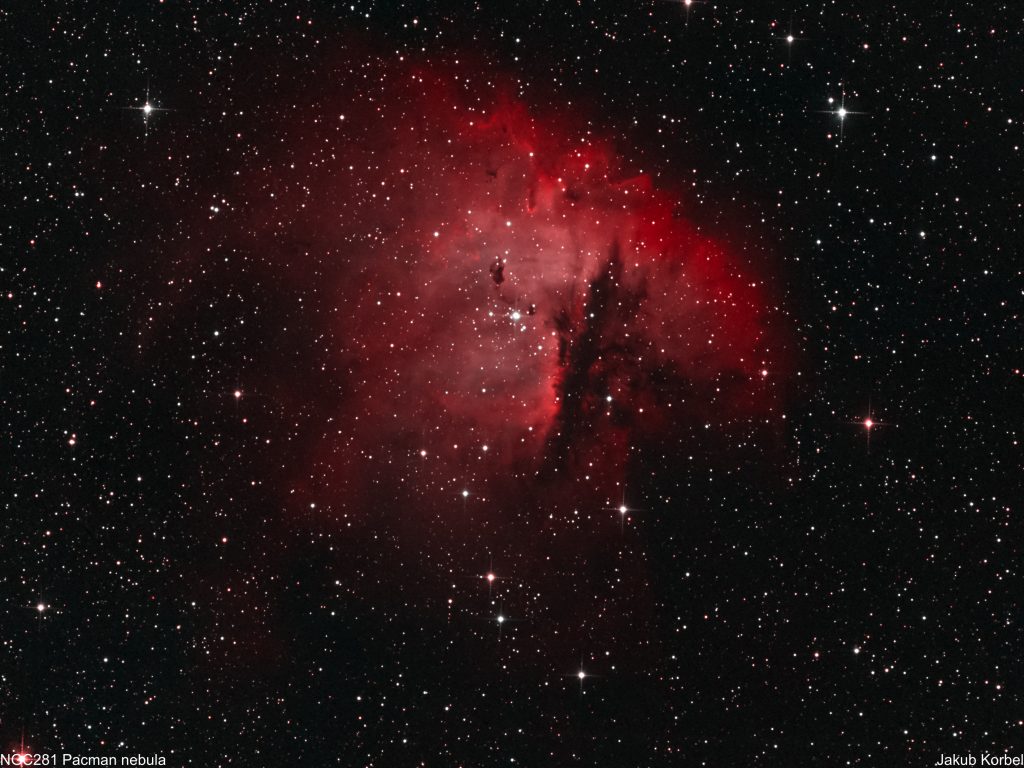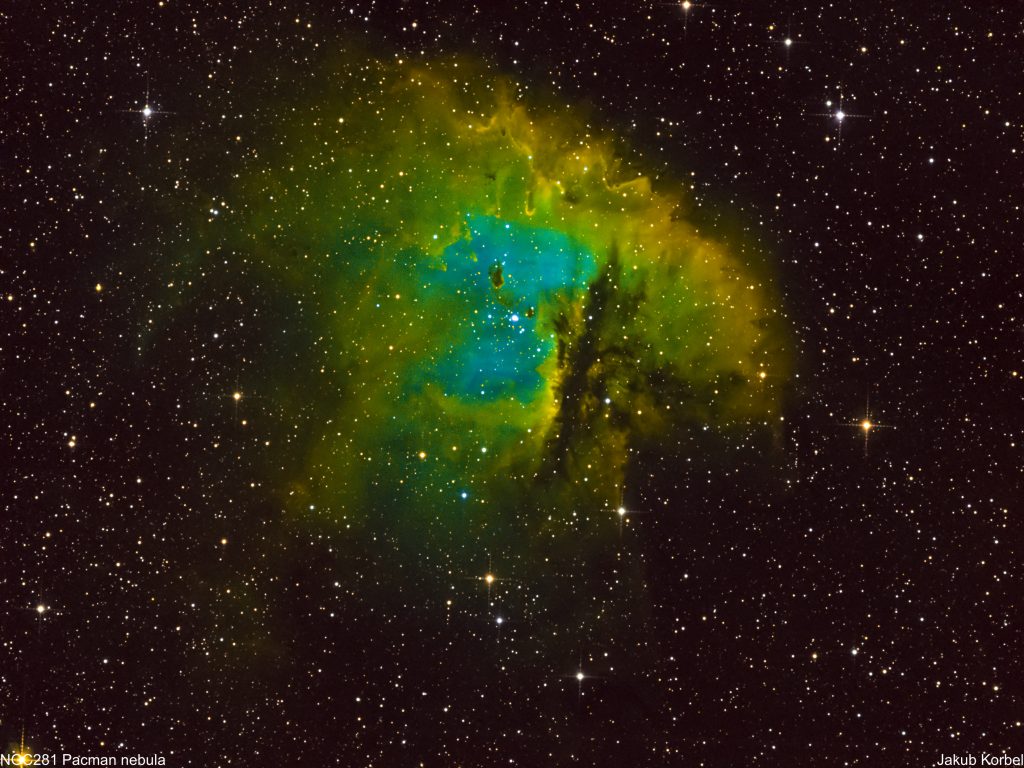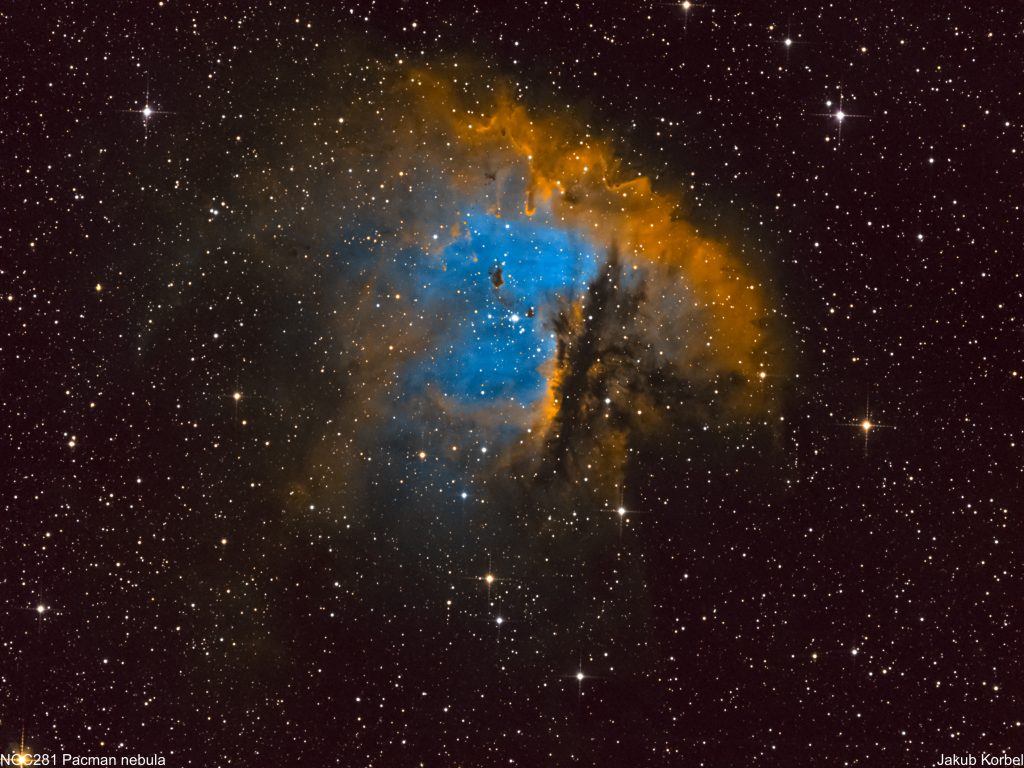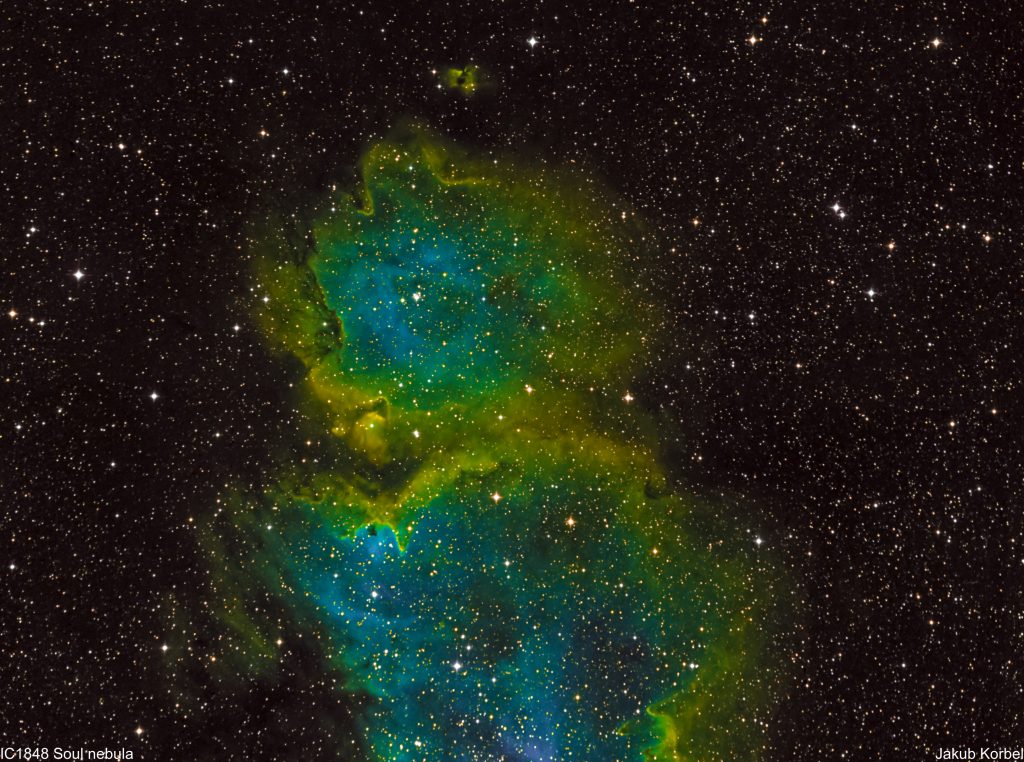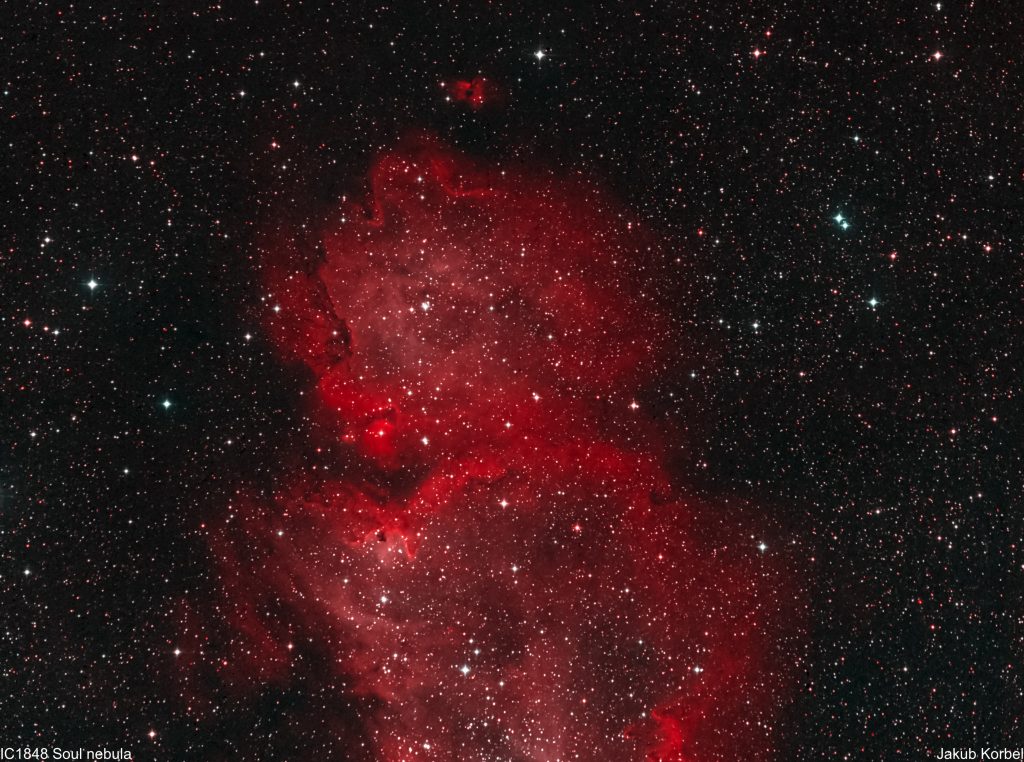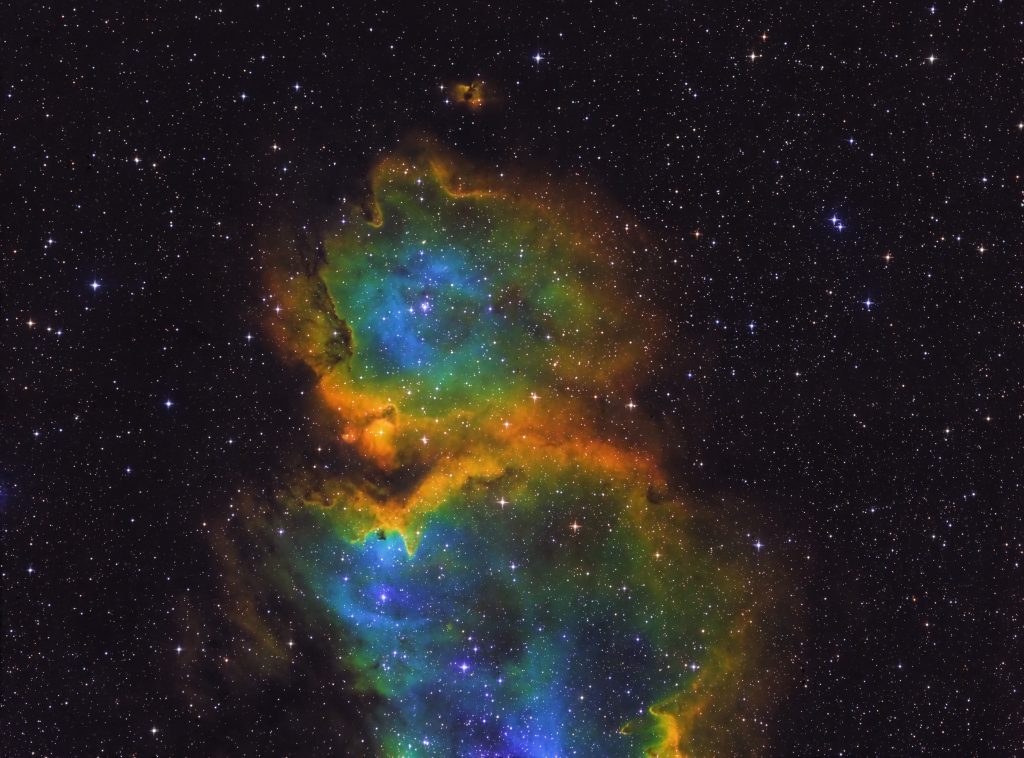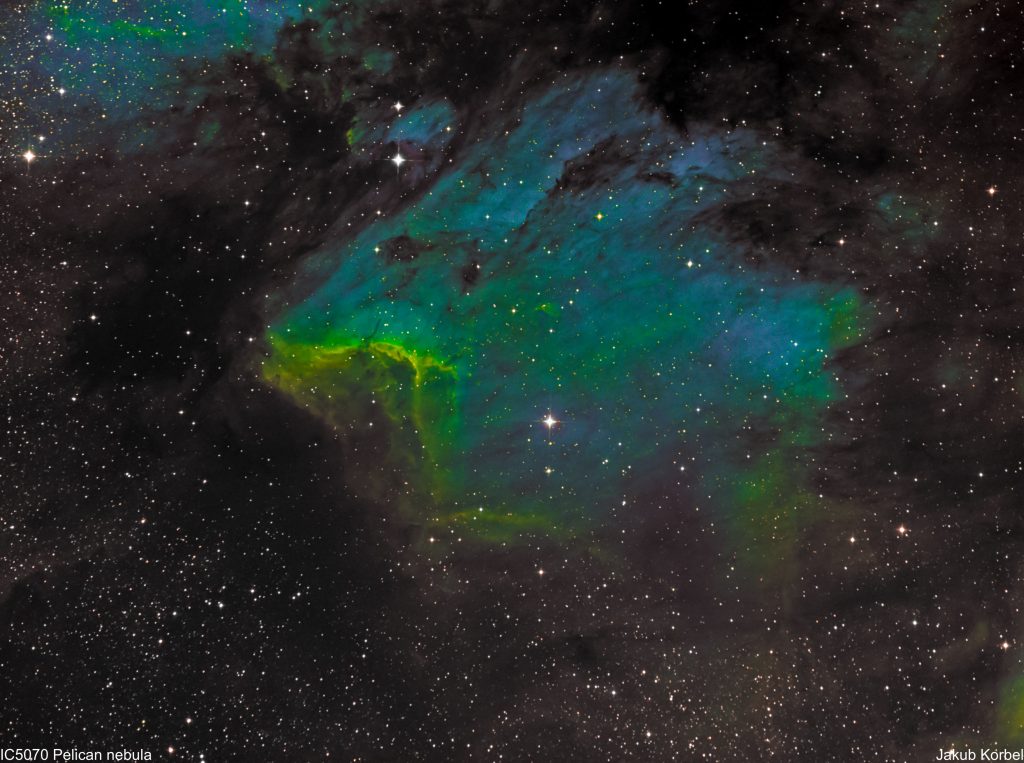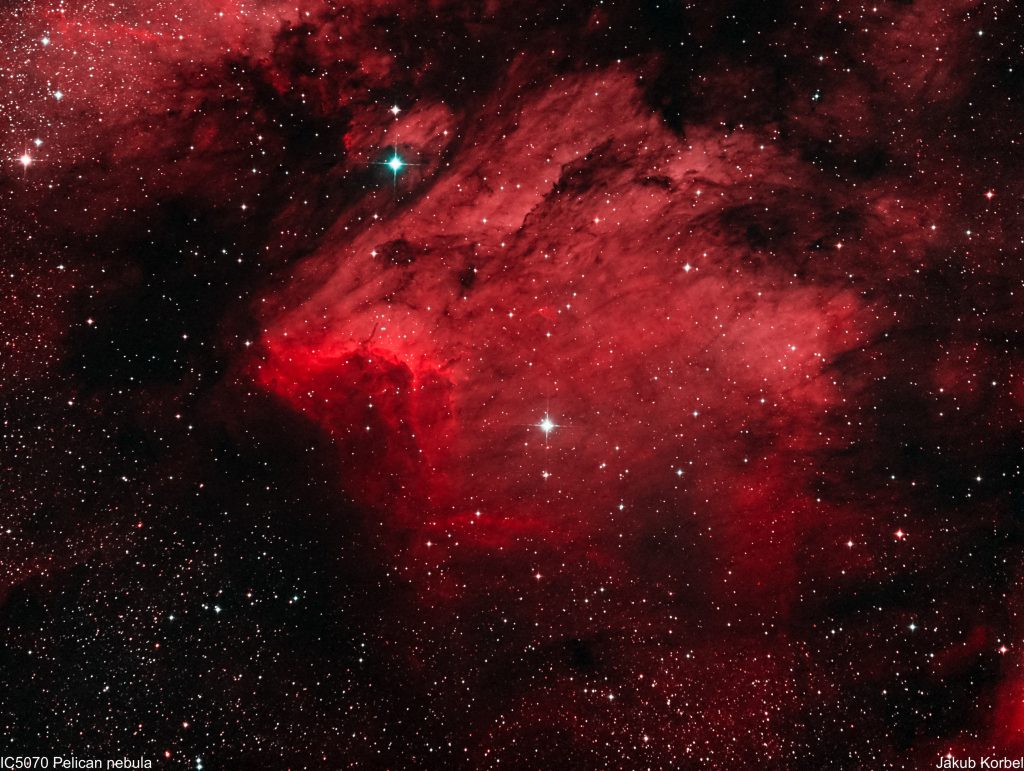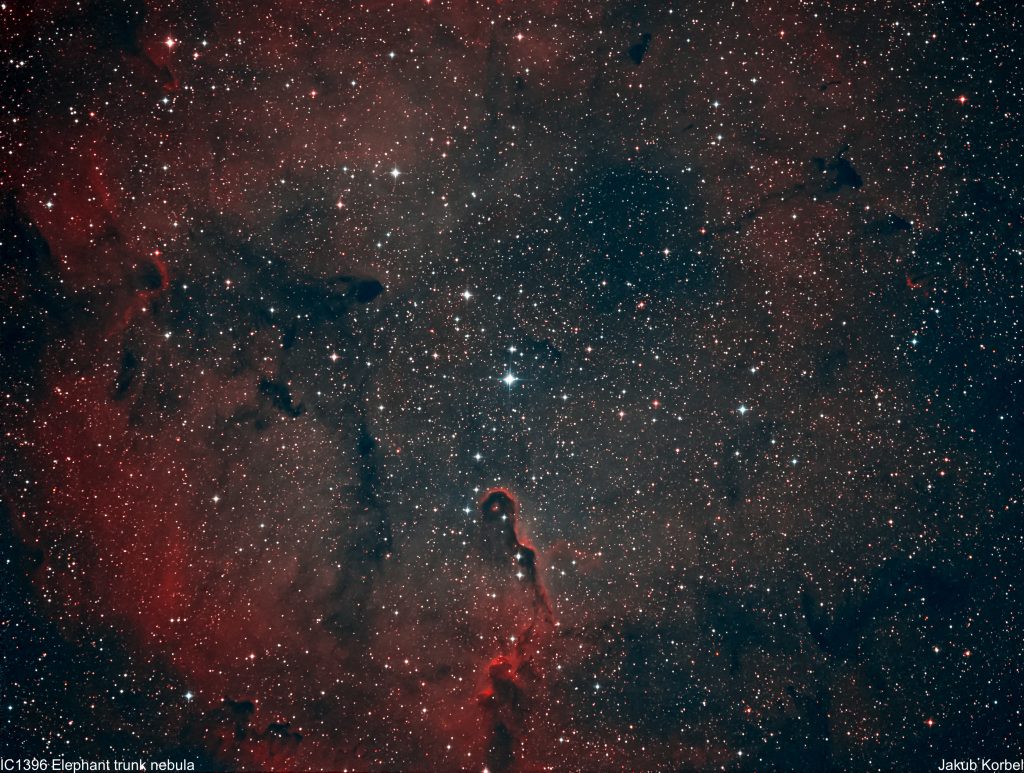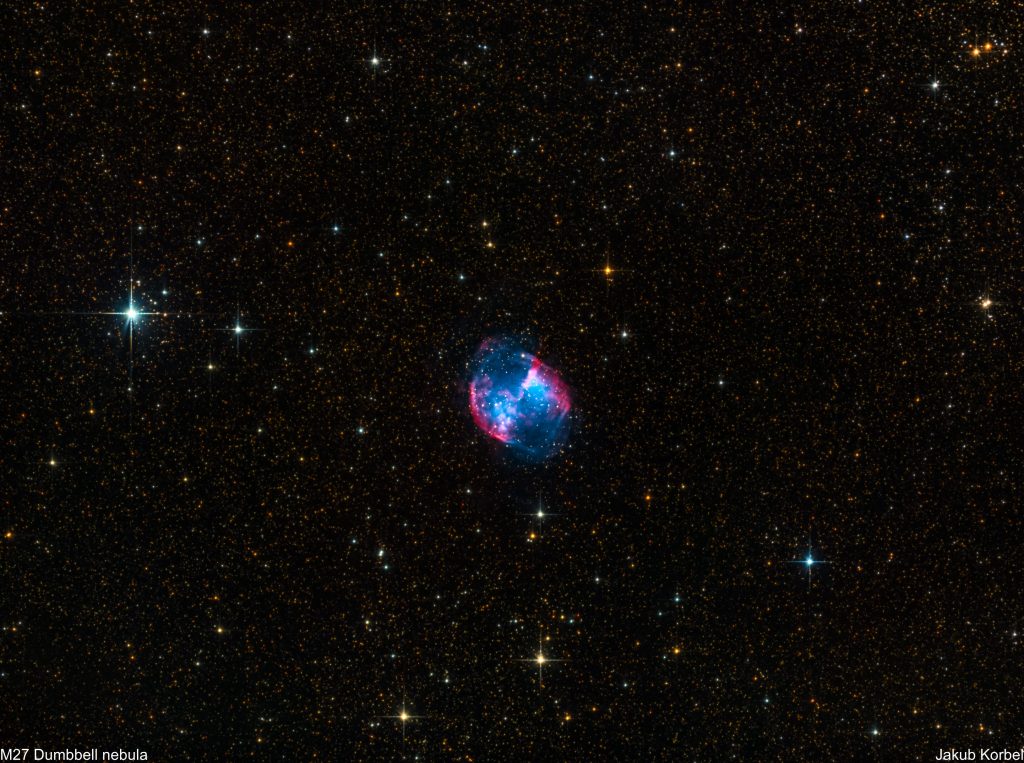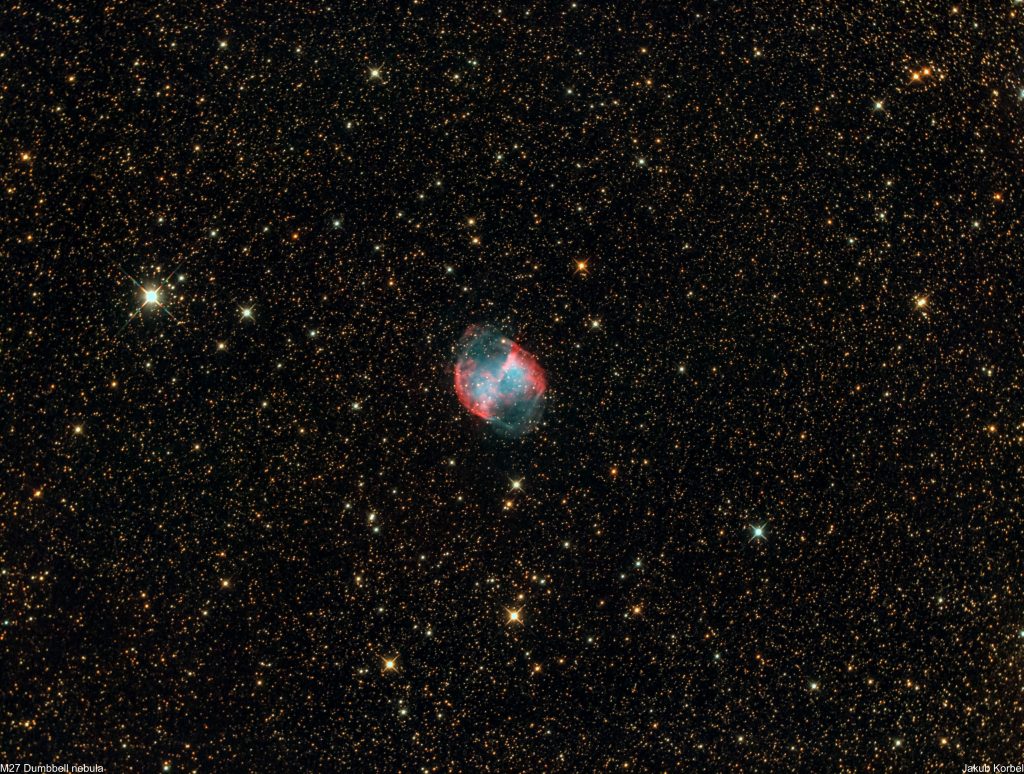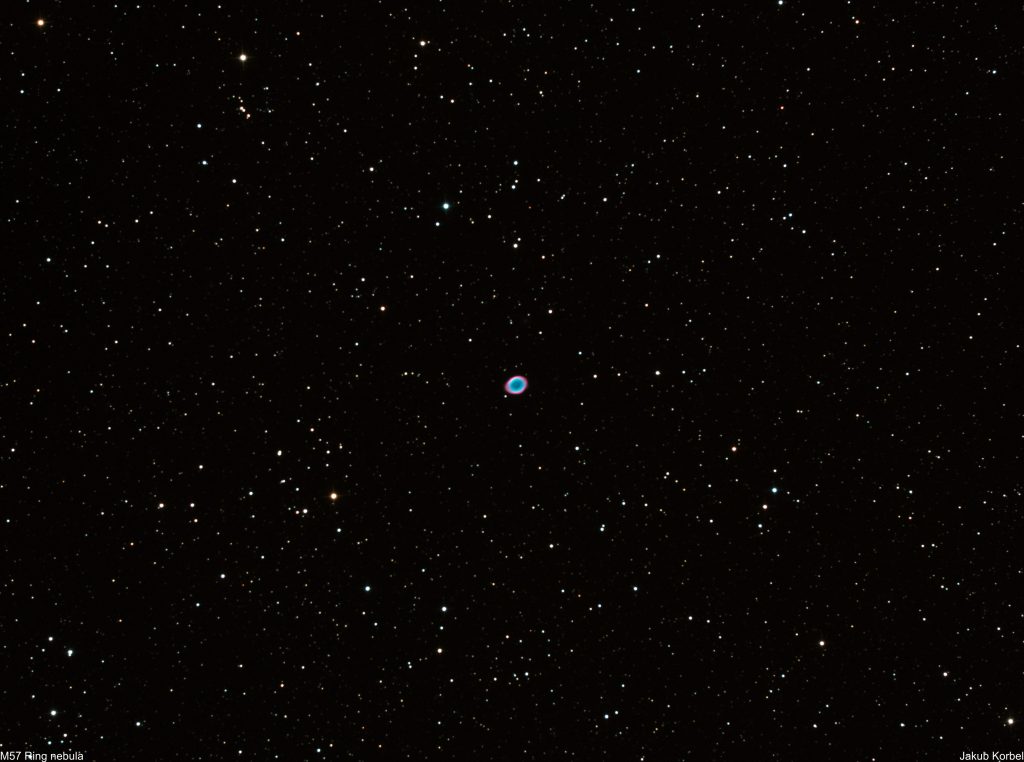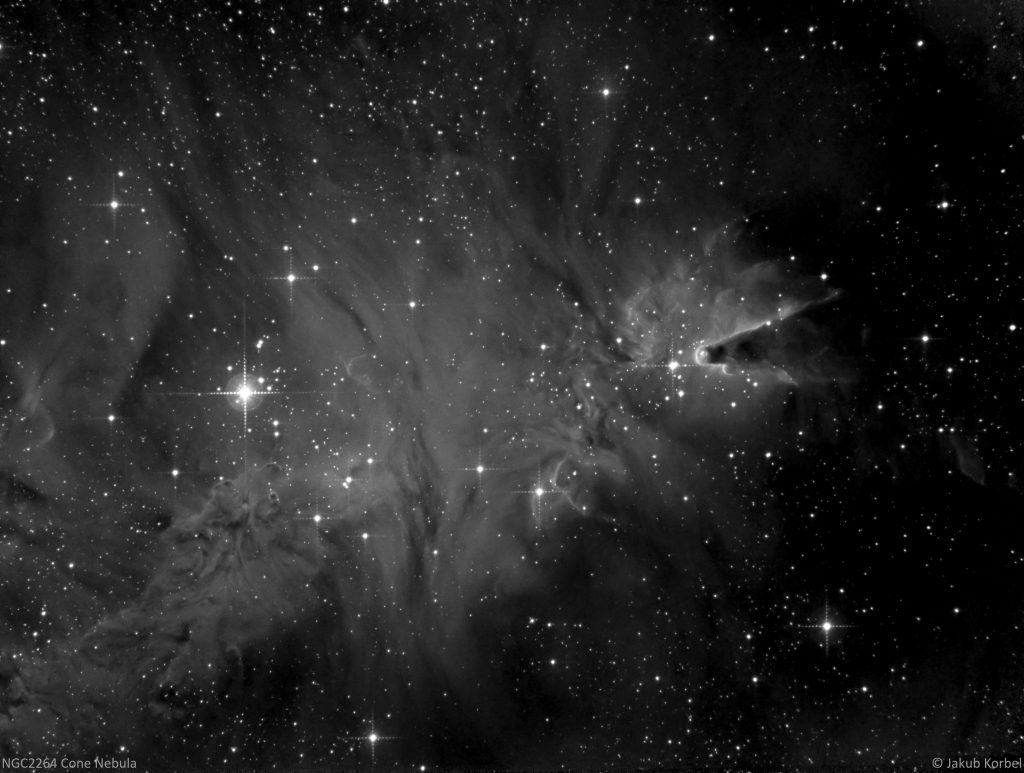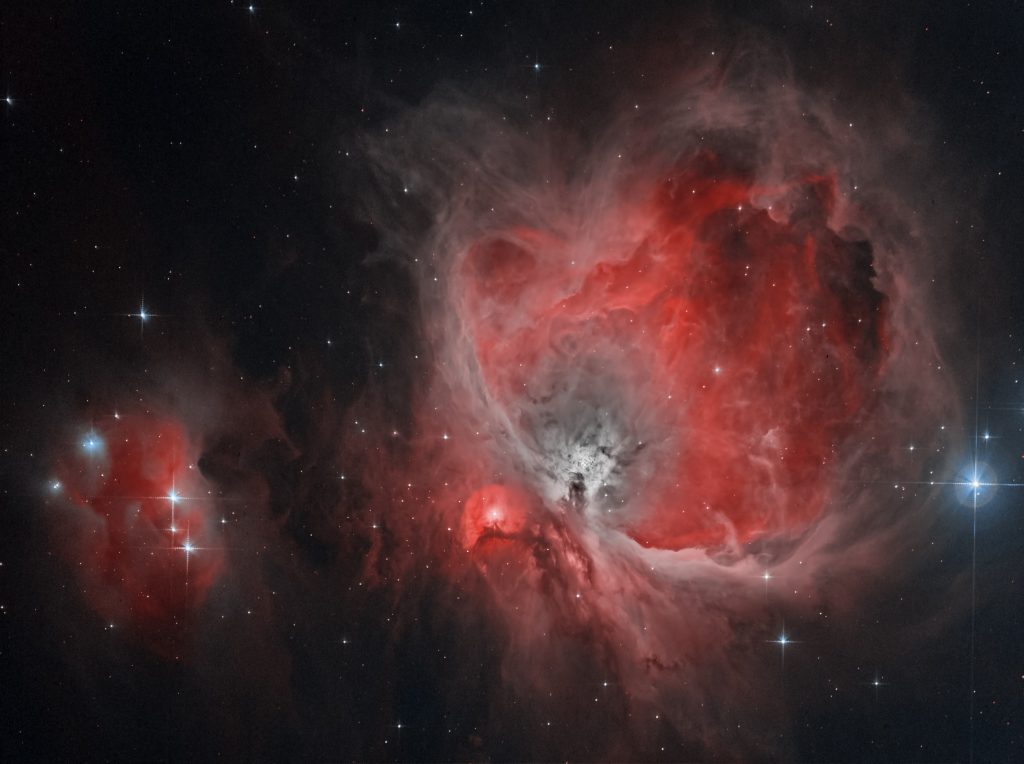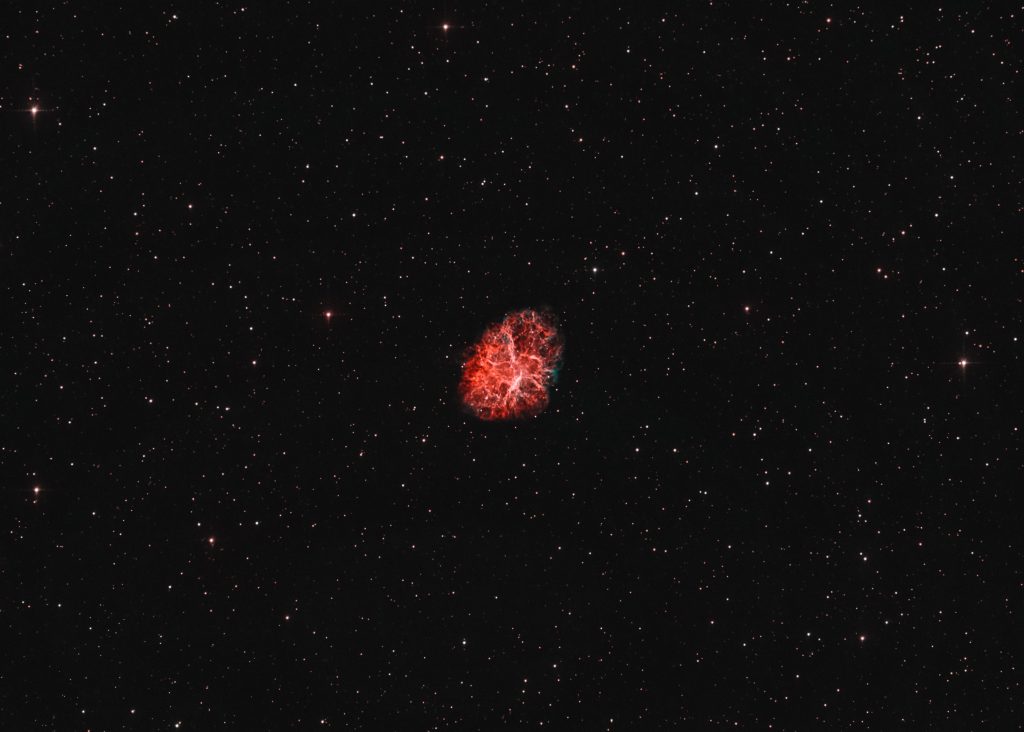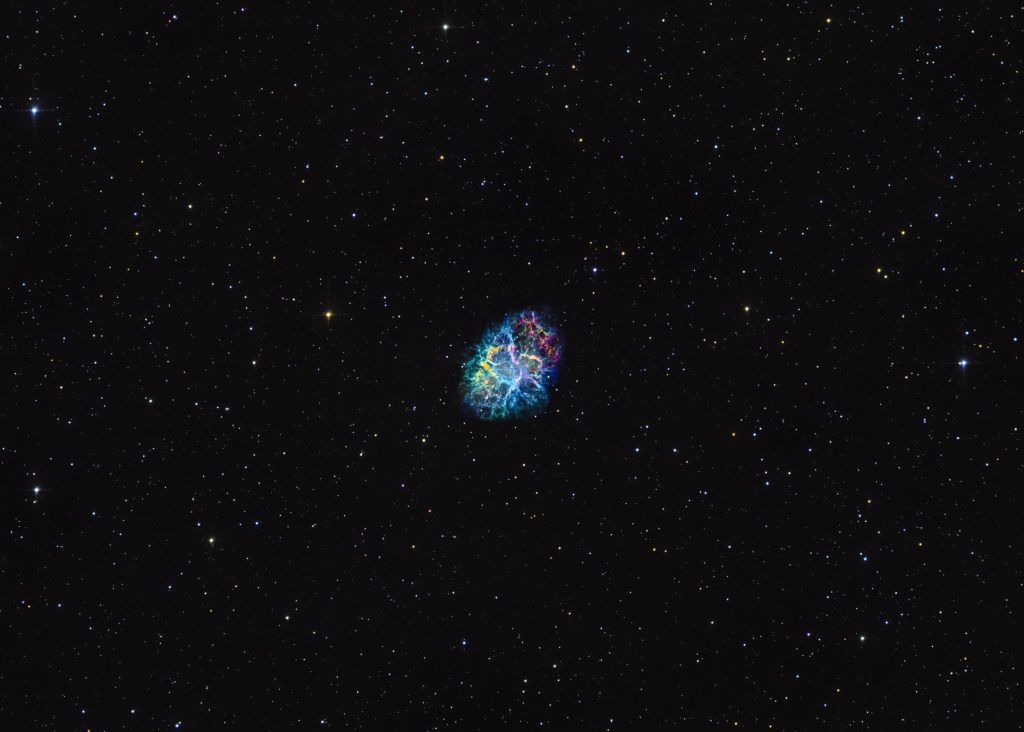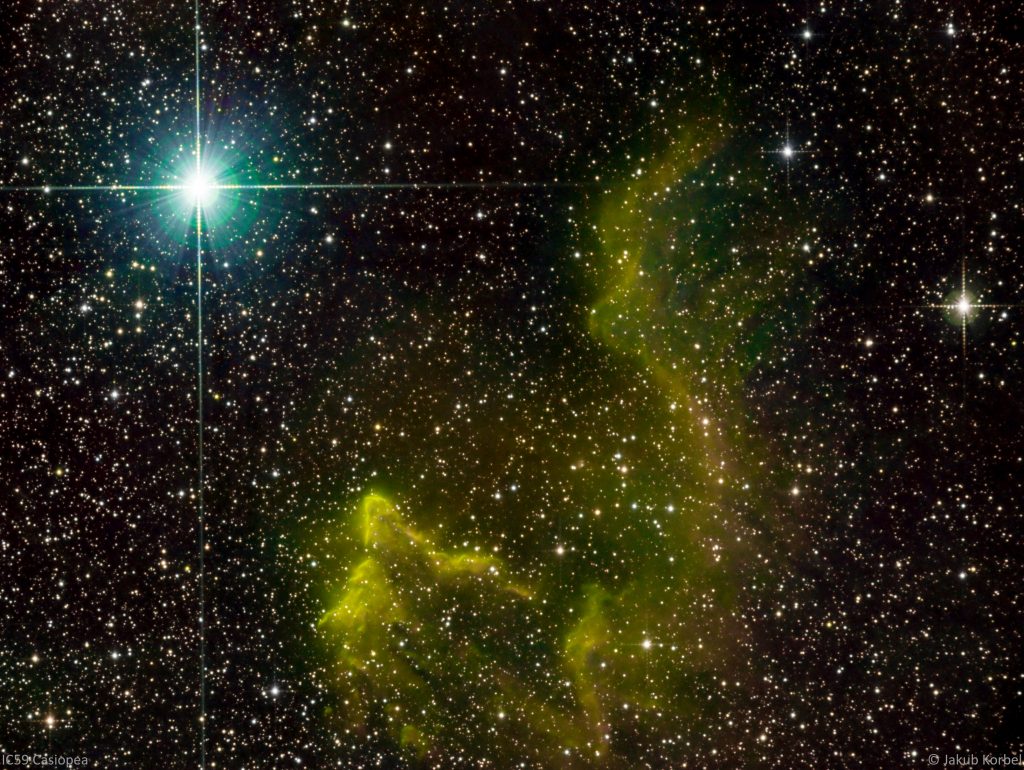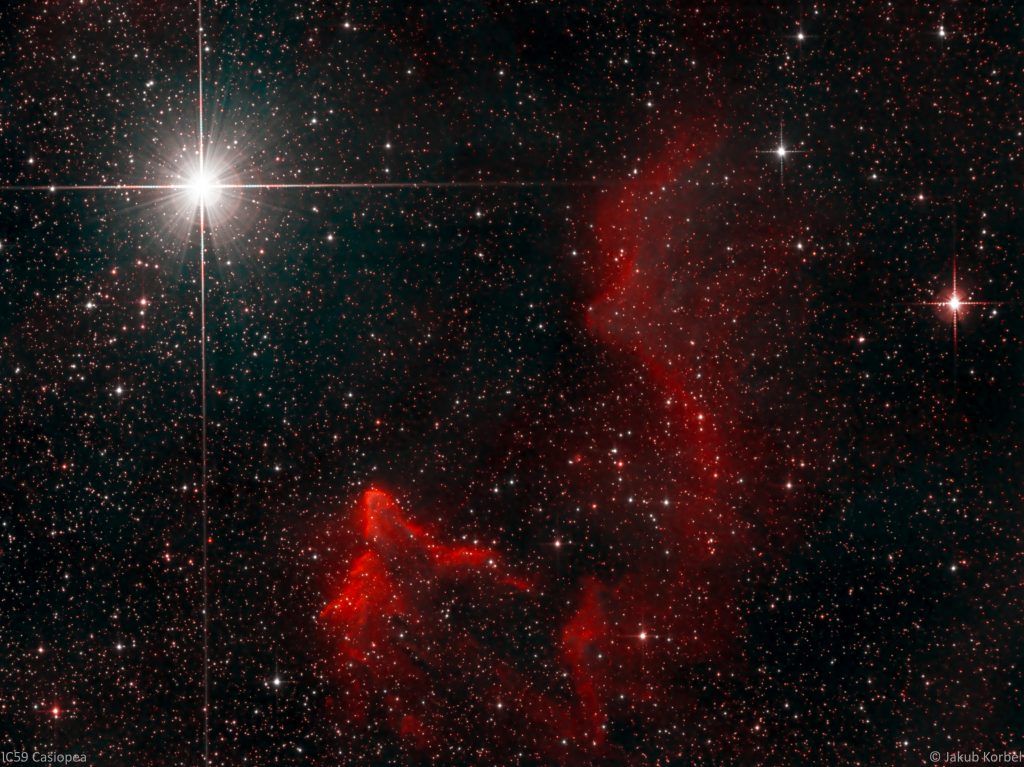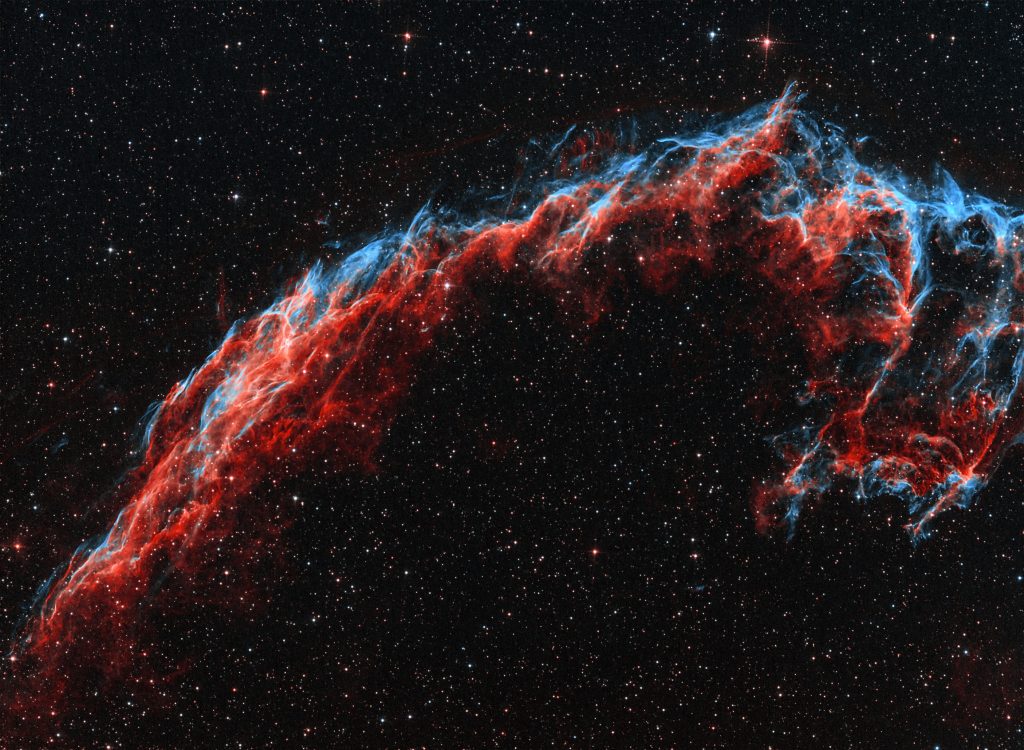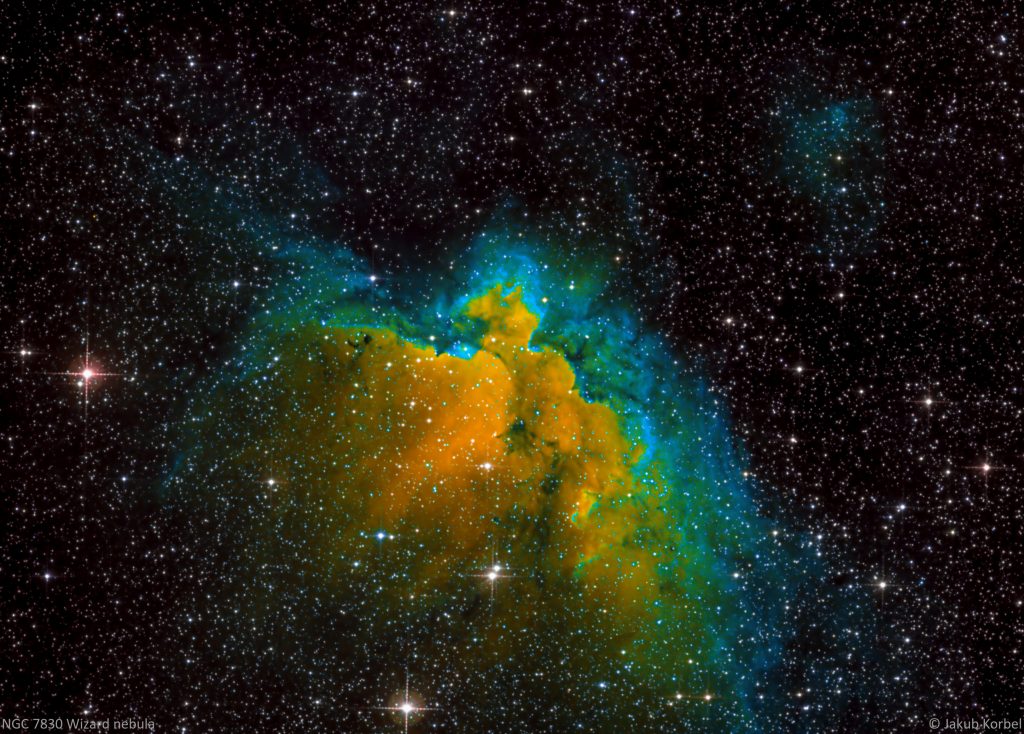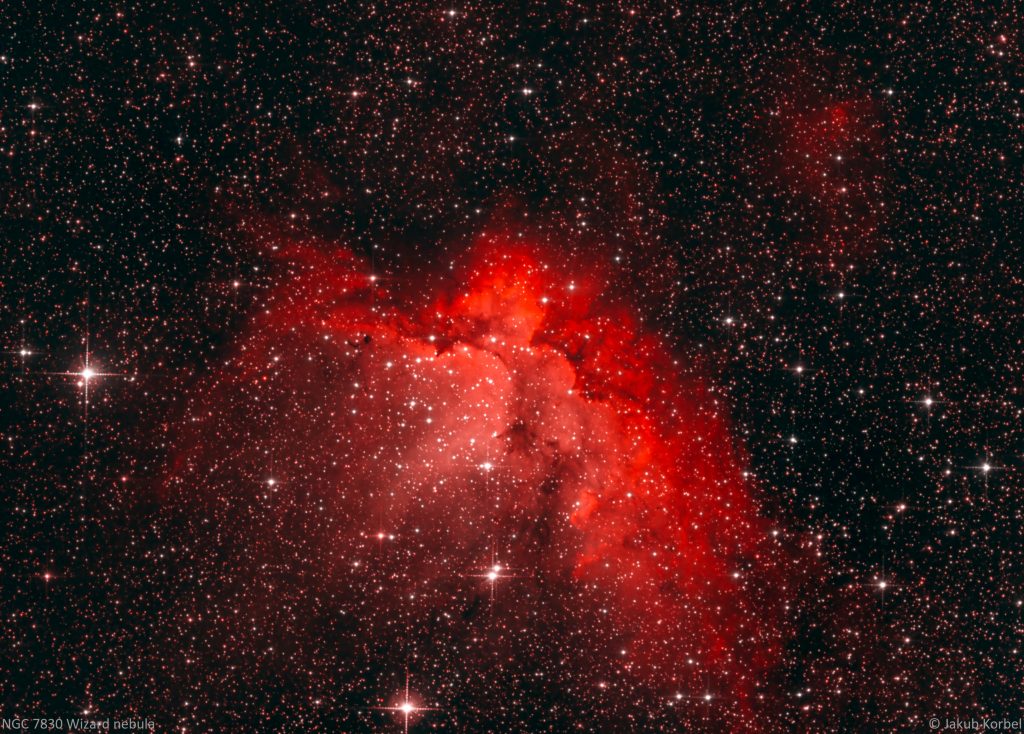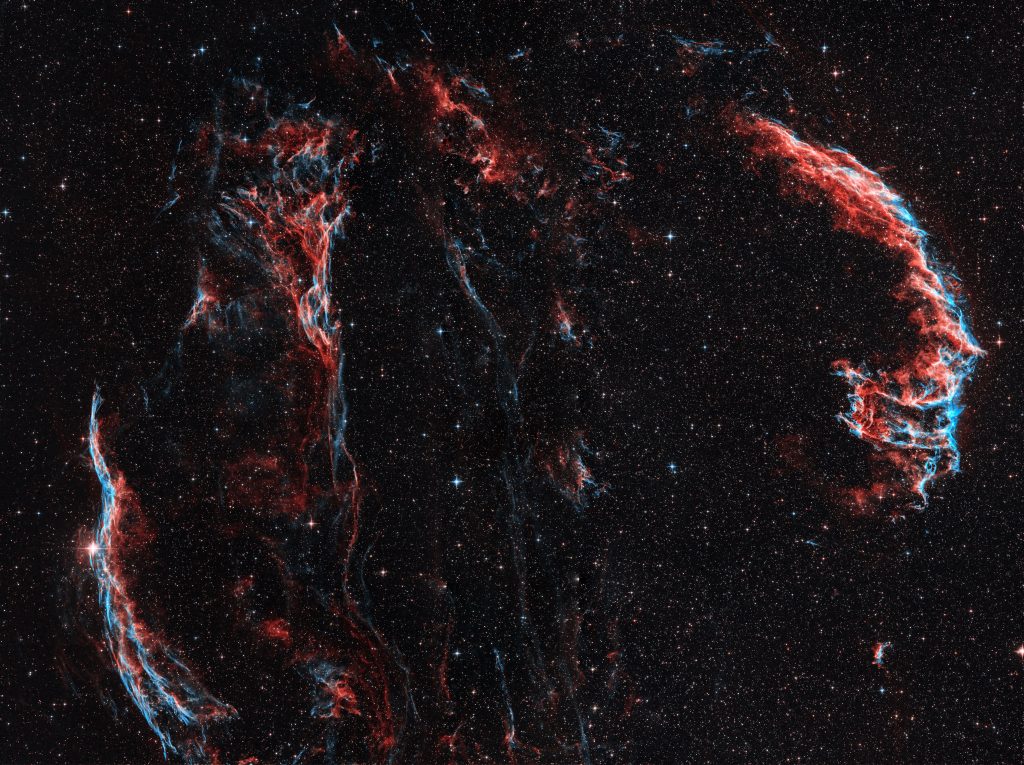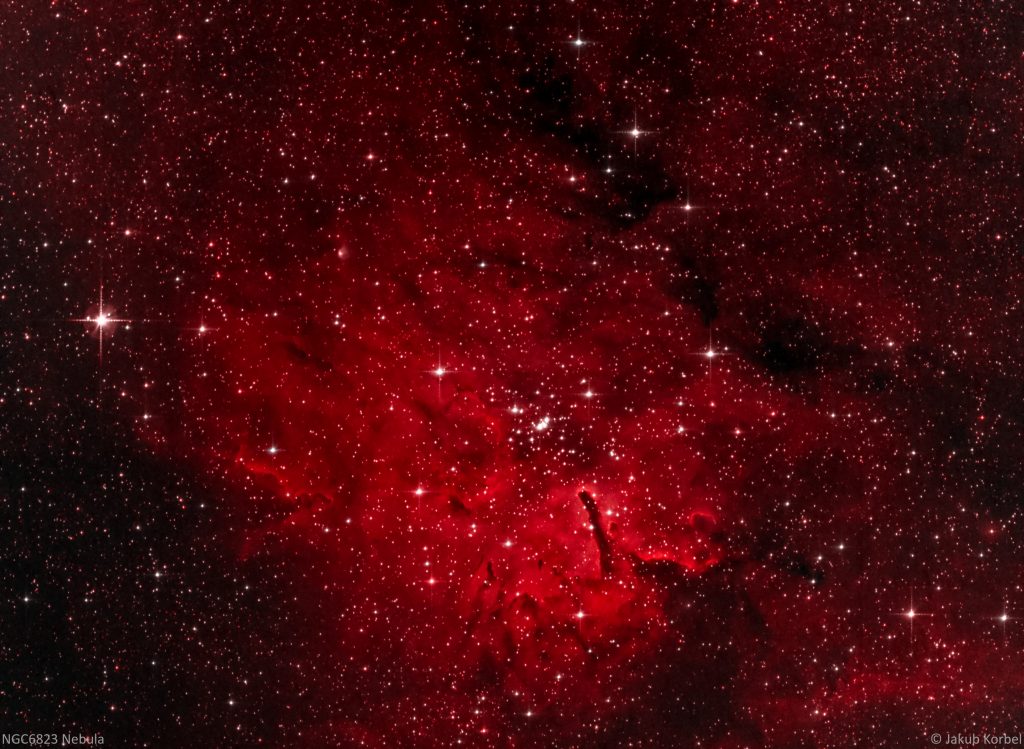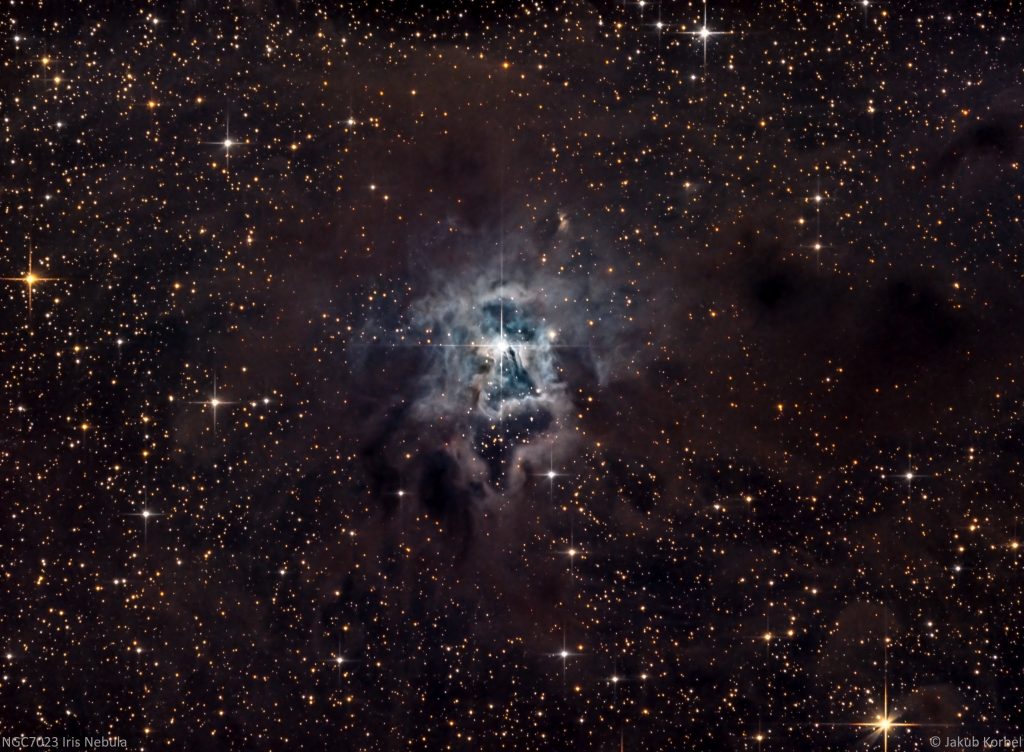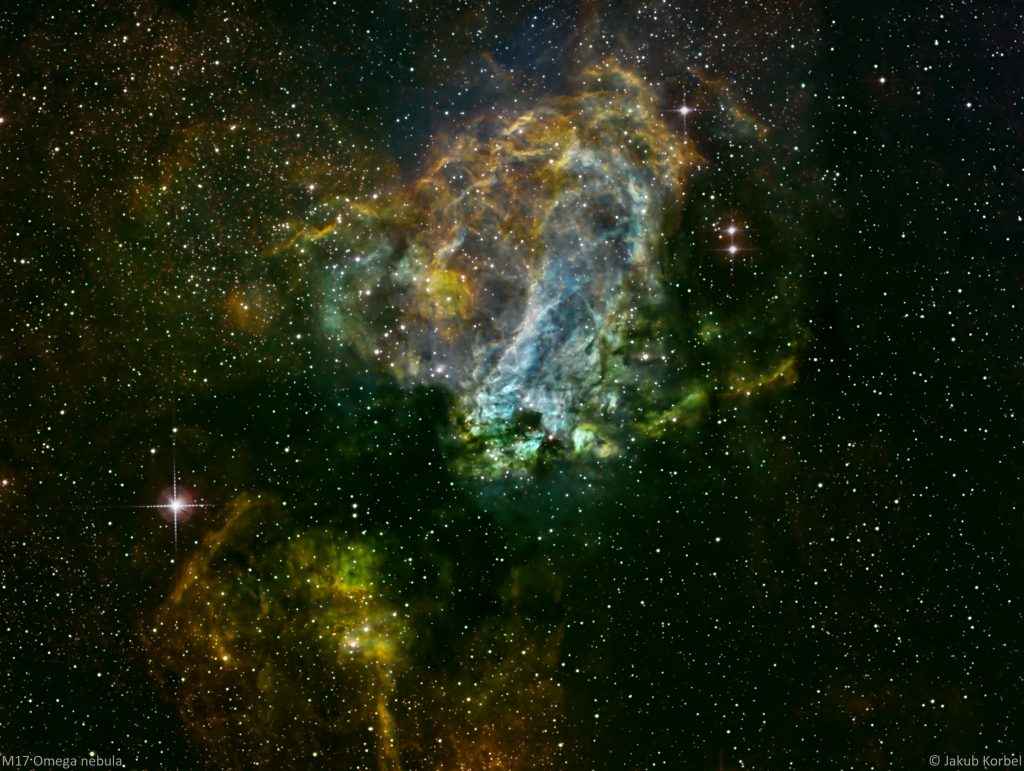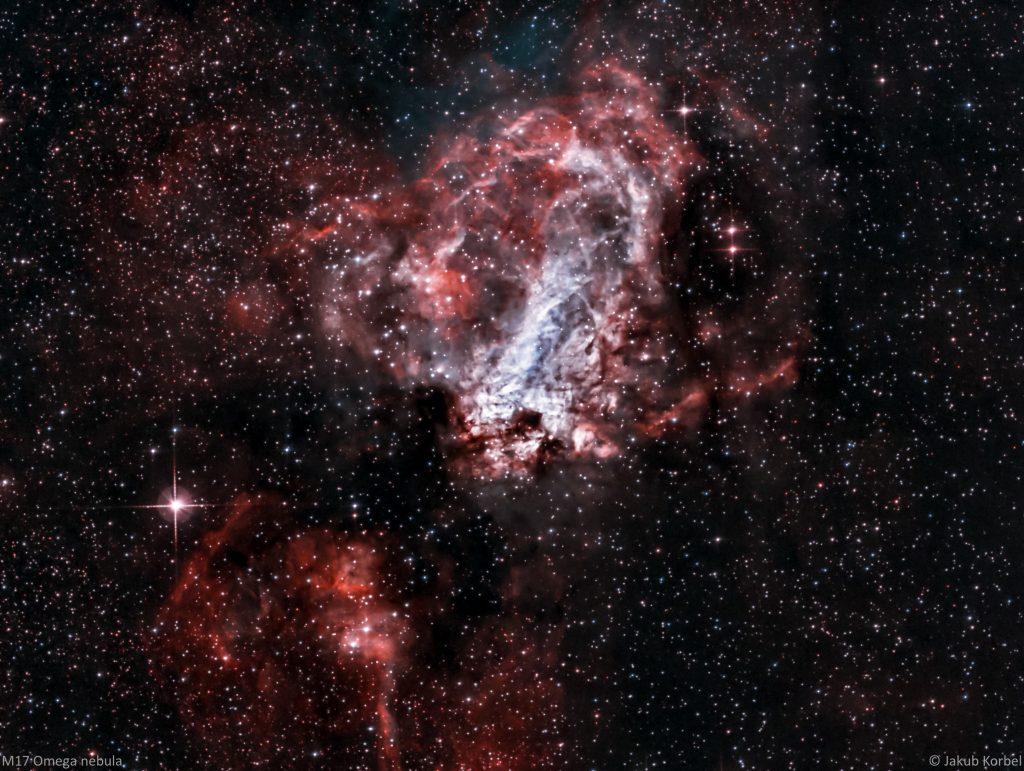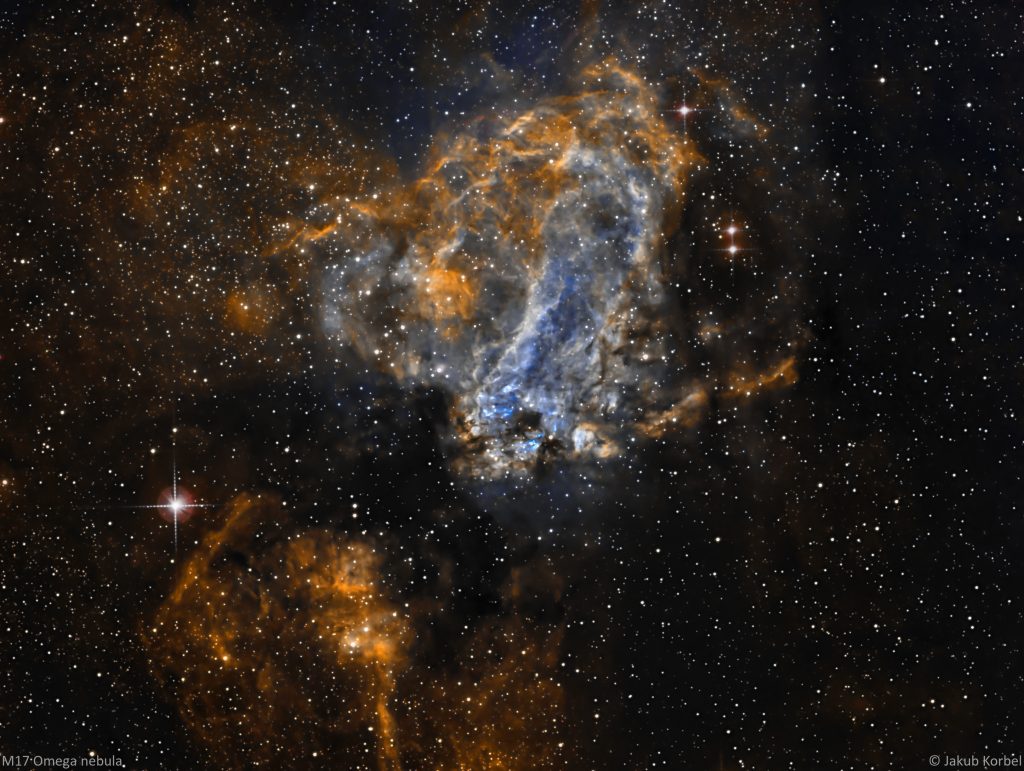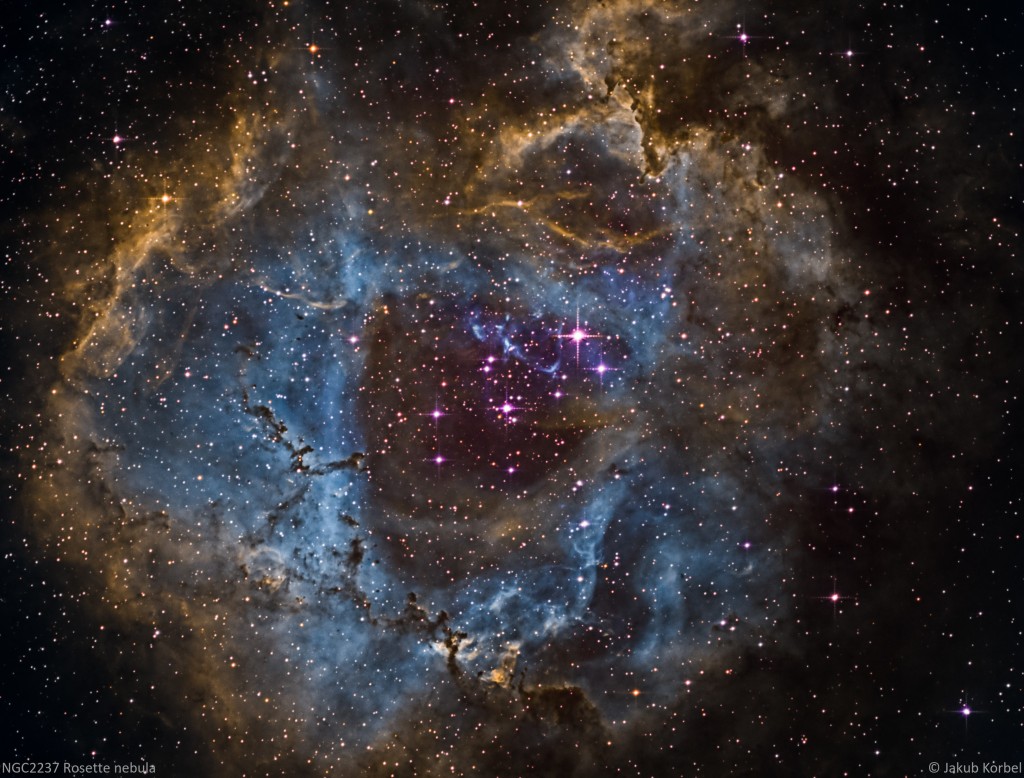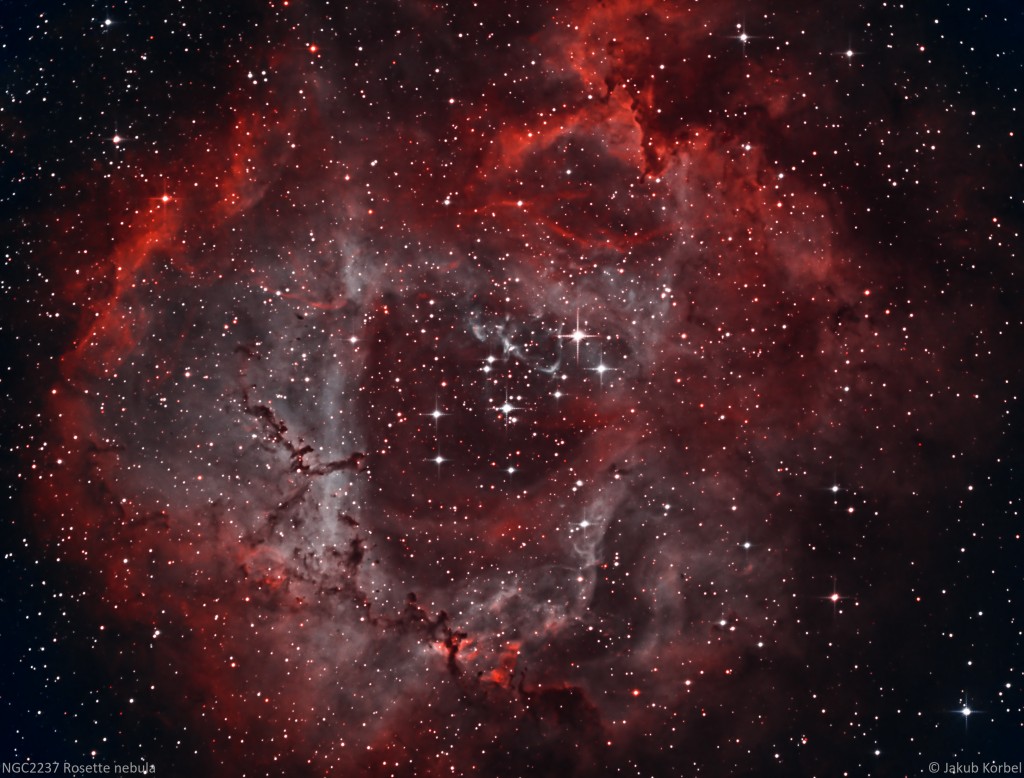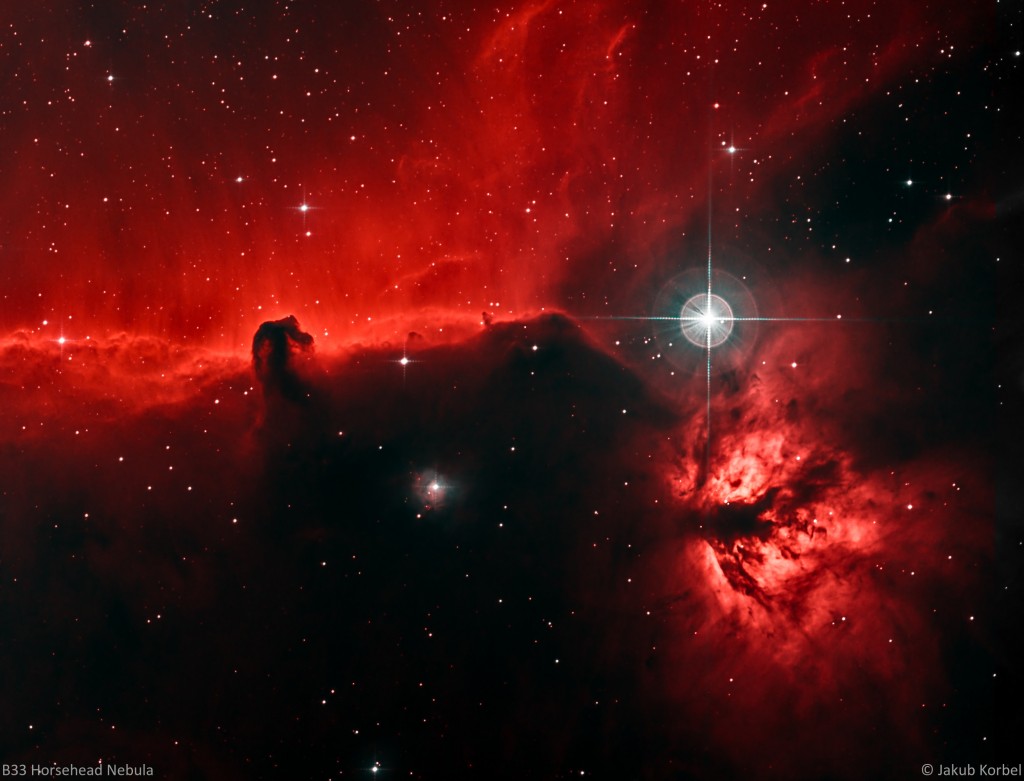Lagoon nebula (sometimes called Messier 8) is a giant intergalactic cloud of ionized Hydrogen. The nebula is located in constellation Sagittarius and it’s 4100 light-years away from Solar System. It belongs to one of the brightest nebulas visible from northern hemisphere.
I have to admit, this nebula was the main reason and target of the trip to Milos and it was the first deep space object captured there. When I processed the picture I was so happy that the nebulosity is so clearly visible without any narrow band filters. Well, mission accomplished.
Technical details:
| Telescope: | Newton 150/600 mm |
| Aperture: | 150 mm |
| Focal length: | 660 mm |
| Mount | iOptron CEM25P |
| Autoguiding | QHYCCD miniGuideScope 130 mm f/4.3, ZWO 174 MM |
| Camera: | ZWO 071 Pro @-10C |
| Corrector: | Explore Scientific HR coma corrector |
| Filters: | Astronomik L-1 - UV IR Block Filter |
| Exposure | 39x180s, Gain 134, bin 1x1, |
| Date: | 2018-09-01 |

